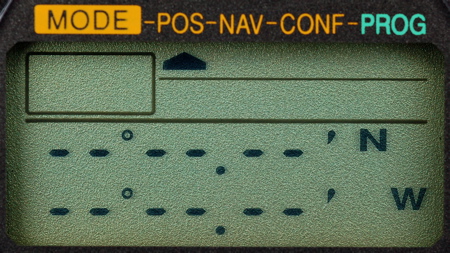
Startup screen
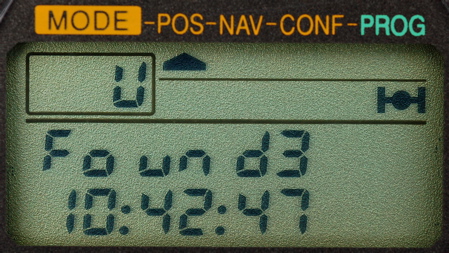
Satellite status
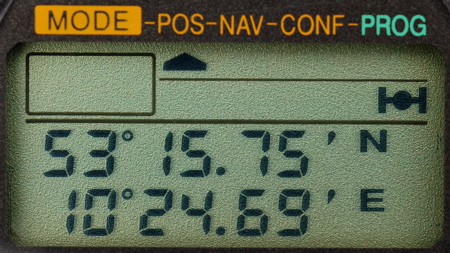
Position
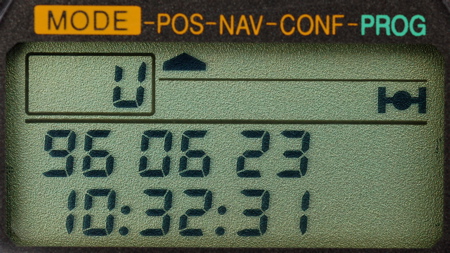
Time display
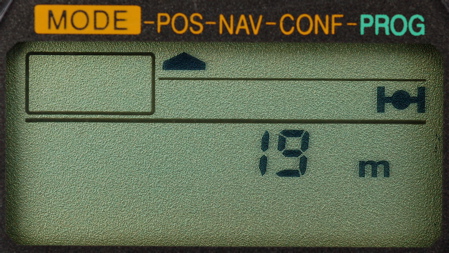
Height display
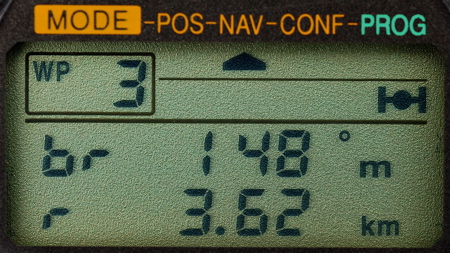
Bearing / range to a waypoint
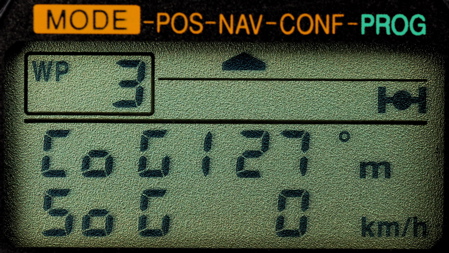
Course / speed display
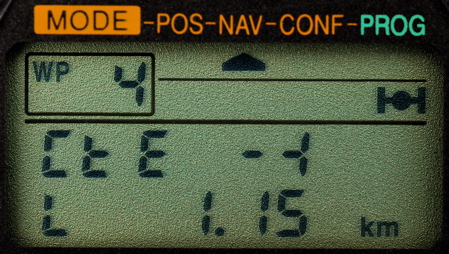
Cross track error display
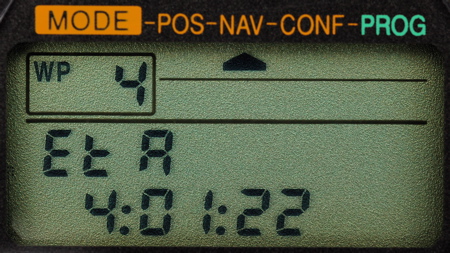
Estimated time of arrival display
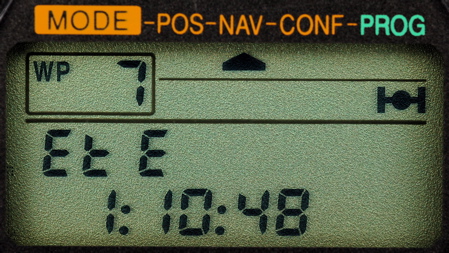
Estimated time enroute display
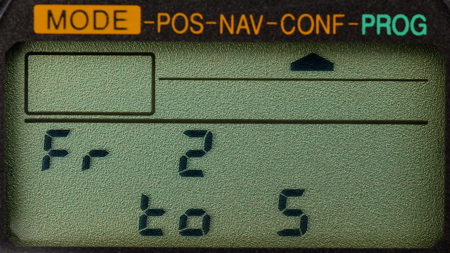
Bearing / range between two points
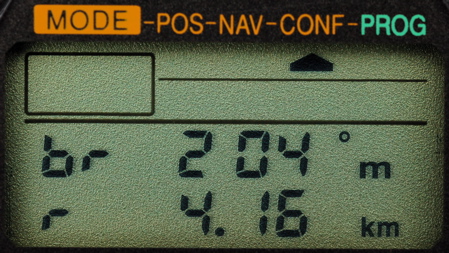
Bearing / range between two points result
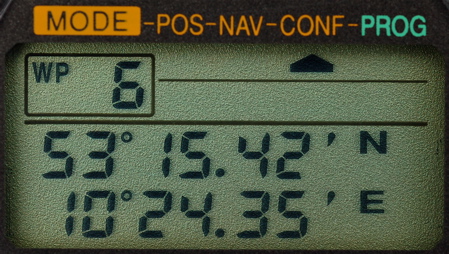
Review waypoint
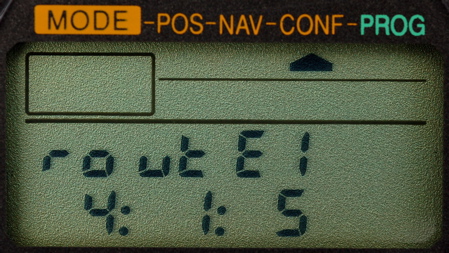
Review route
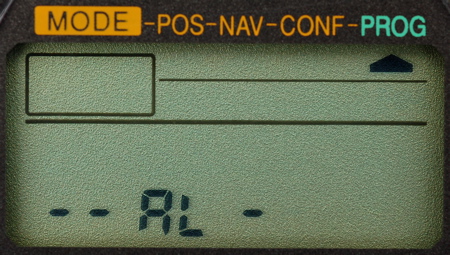
Almanac update in progress
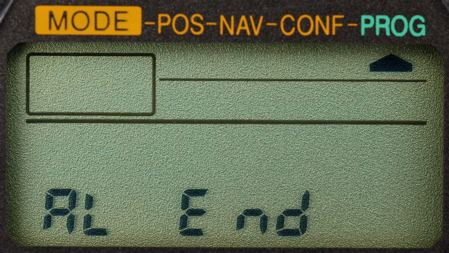
Almanac update ready
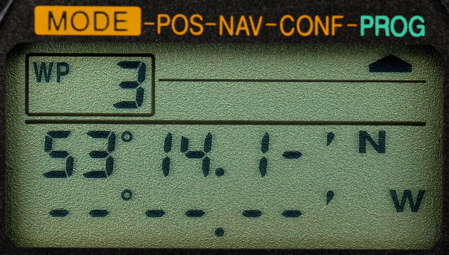
Waypoint definiton
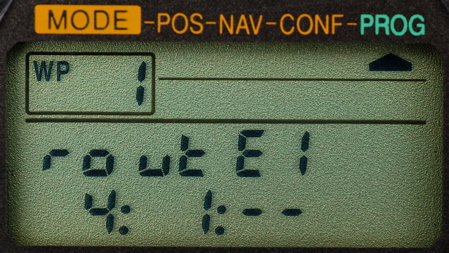
Route definition
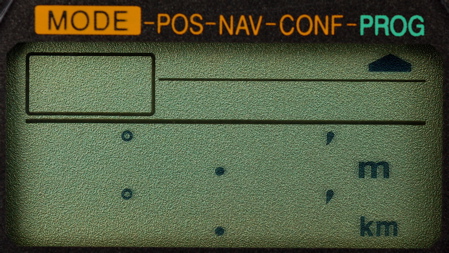
Units choice
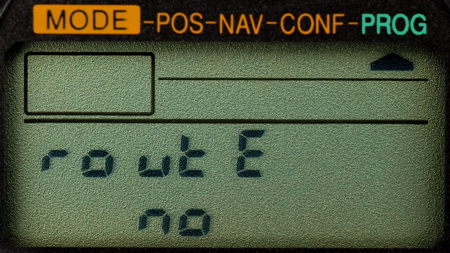
No route chosen
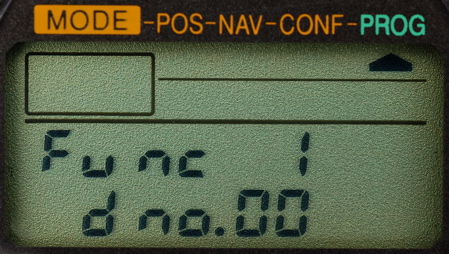
Datum choice
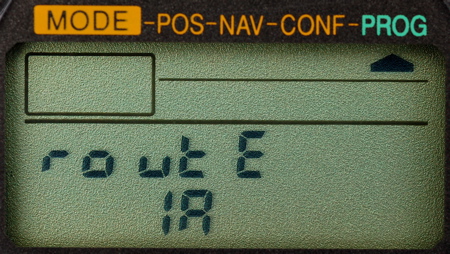
Choose reversed route
Maybe inspired by Sony, the japanese electronic manufacturer Matsushita made an attempt in the GPS market too. Like Sony they built a basic GPS unit and a chart plotter. They managed to build a very small unit compared to other manufactureres in the year 1993. It was sold as the Panasonic KX-G5500.
It could be operated by a NimH battery pack or with five AA cells. There was a fixed mount clamp available that enabled the KX-G5500 to use an external antenna and even adds a communication port. The display is a two line seven segment custom LCD screen.
The KX-G5500 has four modes that are indicated by markers on top of the screen.
In the Pos-mode the position, time and height may be displayed. The Nav-screens provide distance, bearing, heading and speed, estimated time enroute, estimated time of arrival and even a graphic cross track error display.
With the Conf-mode stored waypoints and routes can be viewed and distance and bearing between two points can be calculated. The Prog-mode allows settings of units and programming of waypoints and routes. Quite unusual for a GPS unit of this class is the possibility to refresh the satellite almanac manually.
99 waypoints and nine routes can be stored. Routes can be easily used in reversed order. Initializing is an automatic feature that proceeds quickly. The KX-G5500 has five parallel channels for satellite reception, this feature was quite ahead of its time for such a small unit.
A disadvantage is that waypoints are only recognized by numbers. There is no possibility to enter a user defined name. This makes it necessary to have a separate paper list to organize waypoints.
Memory is kept by a PCB-mounted lithium cell.
Icom, a japanese manufacturer of radio communication equipment sold this GPS unit as the Icom GP-22. The design is different, but the electronics are just the same as the Panasonic KX-G5500.
It could be operated by a NimH battery pack or with five AA cells. There was a fixed mount clamp available that enabled the KX-G5500 to use an external antenna and even adds a communication port. The display is a two line seven segment custom LCD screen.
The KX-G5500 has four modes that are indicated by markers on top of the screen.
In the Pos-mode the position, time and height may be displayed. The Nav-screens provide distance, bearing, heading and speed, estimated time enroute, estimated time of arrival and even a graphic cross track error display.
With the Conf-mode stored waypoints and routes can be viewed and distance and bearing between two points can be calculated. The Prog-mode allows settings of units and programming of waypoints and routes. Quite unusual for a GPS unit of this class is the possibility to refresh the satellite almanac manually.
99 waypoints and nine routes can be stored. Routes can be easily used in reversed order. Initializing is an automatic feature that proceeds quickly. The KX-G5500 has five parallel channels for satellite reception, this feature was quite ahead of its time for such a small unit.
A disadvantage is that waypoints are only recognized by numbers. There is no possibility to enter a user defined name. This makes it necessary to have a separate paper list to organize waypoints.
Memory is kept by a PCB-mounted lithium cell.
Icom, a japanese manufacturer of radio communication equipment sold this GPS unit as the Icom GP-22. The design is different, but the electronics are just the same as the Panasonic KX-G5500.
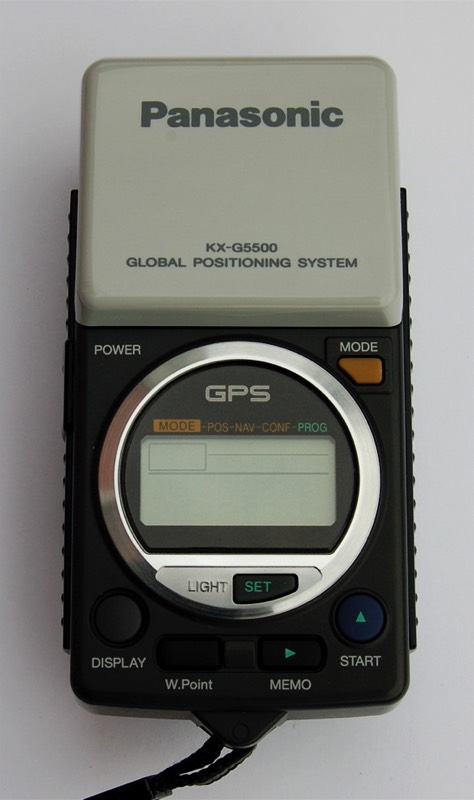
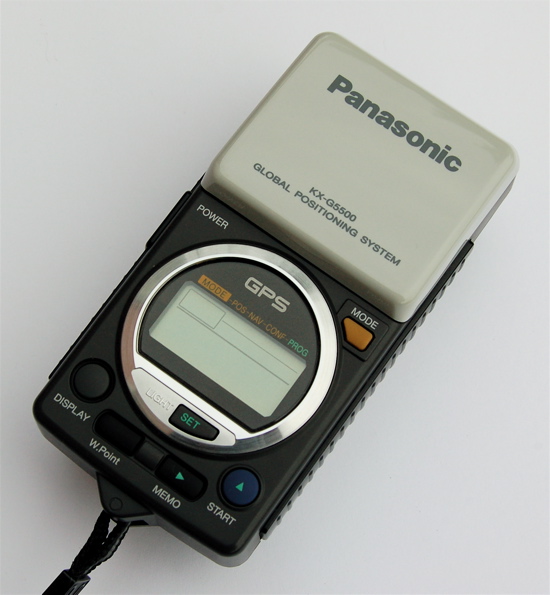
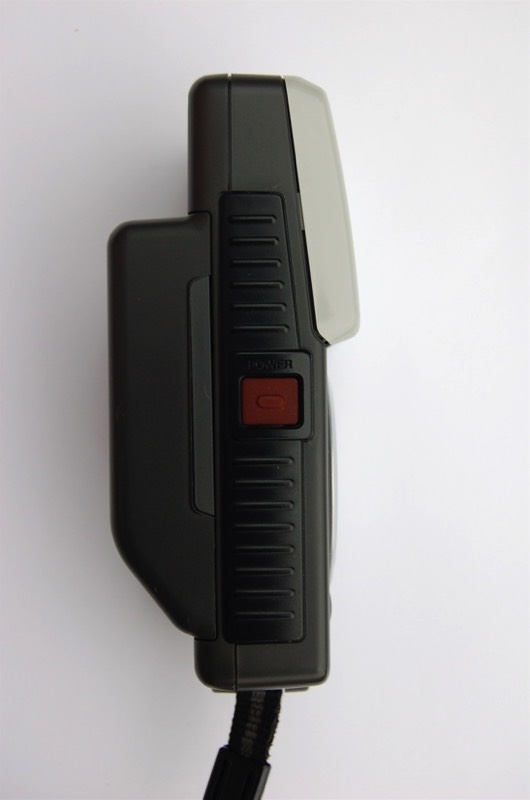
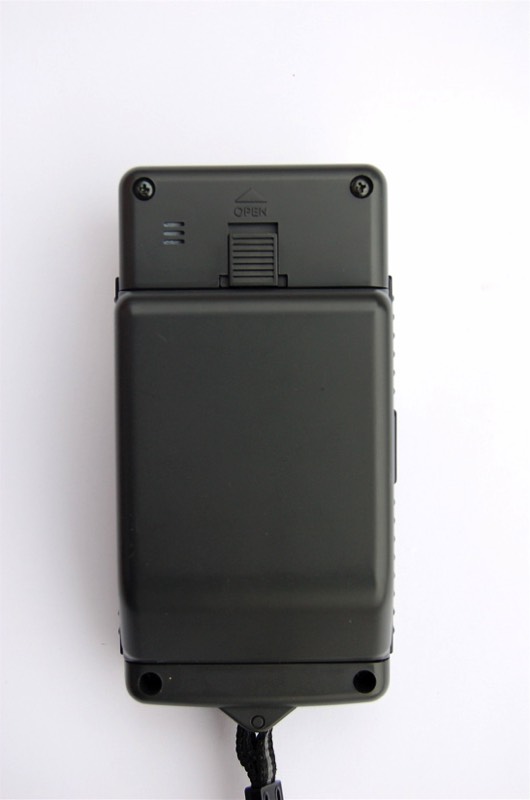
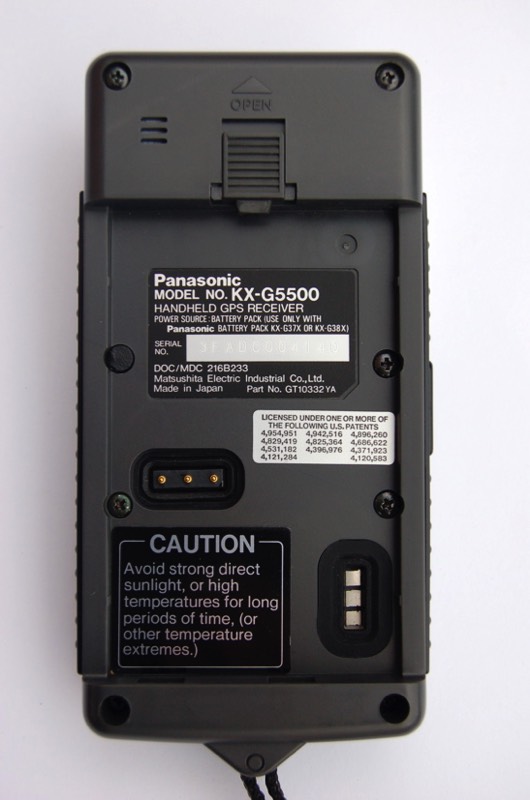
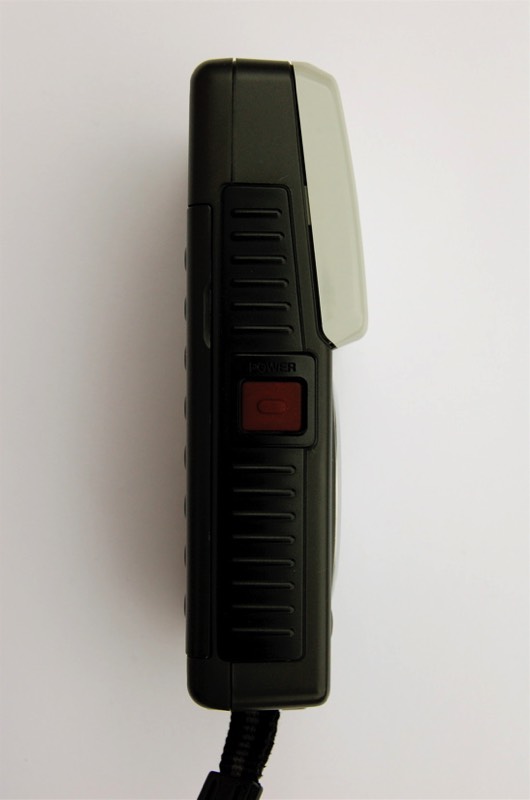
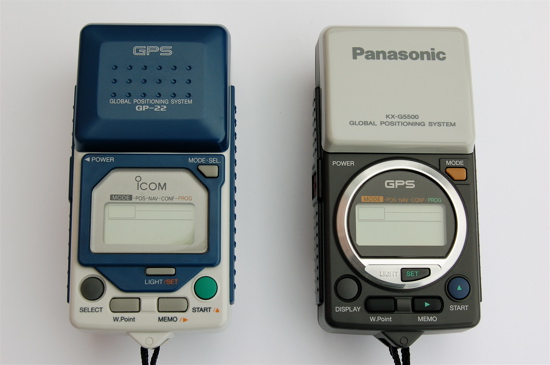
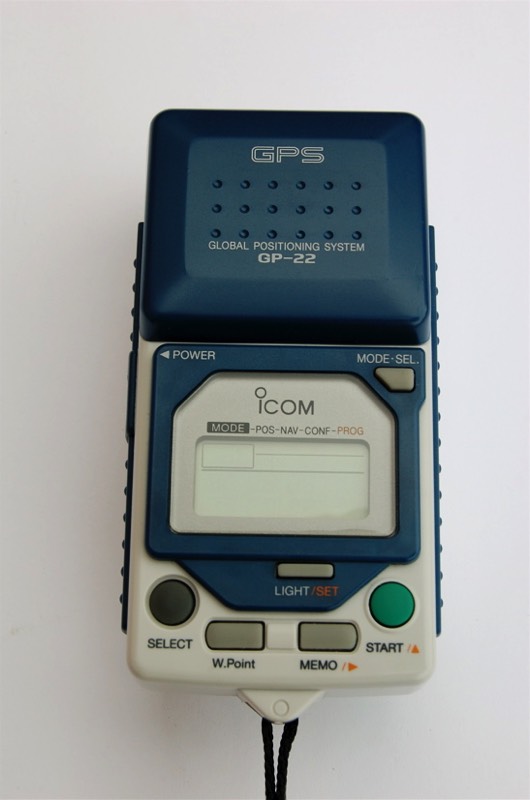
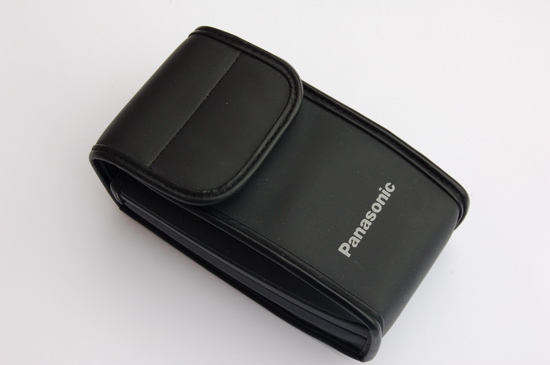
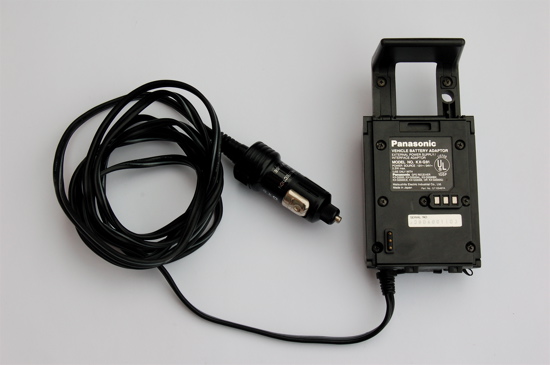
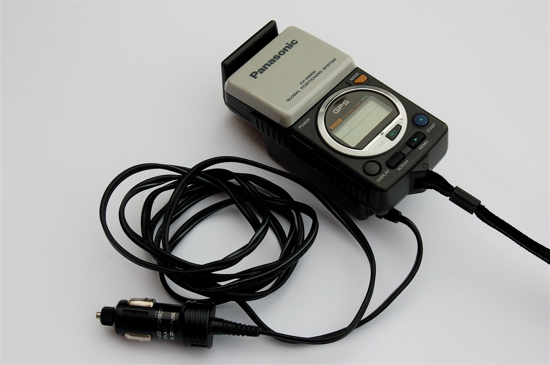
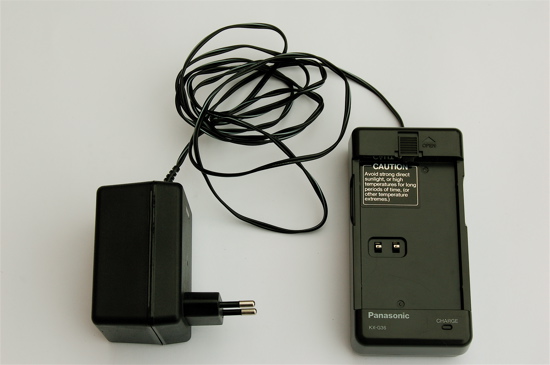
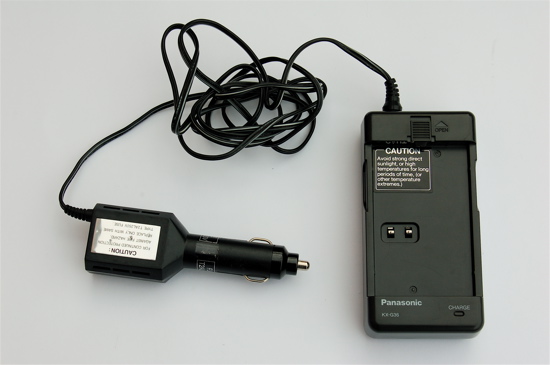
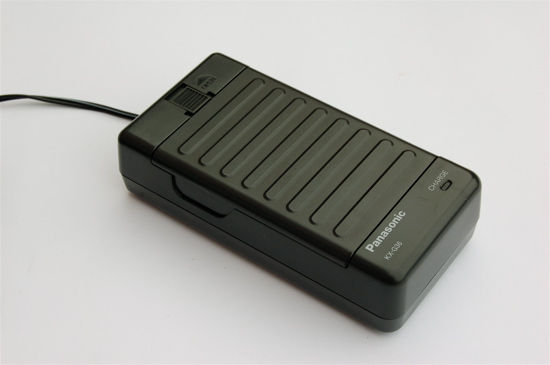
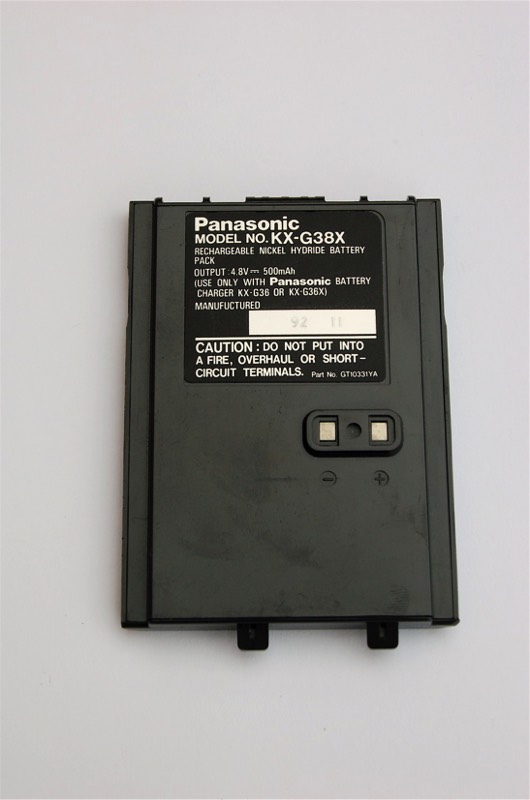
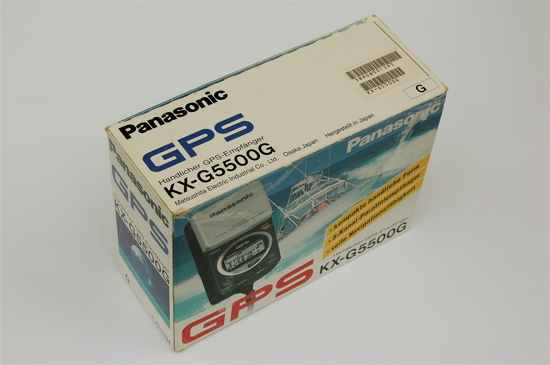
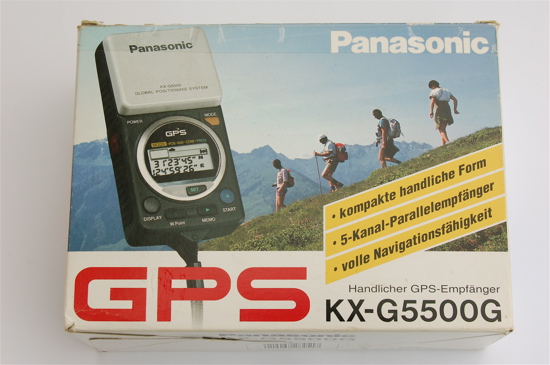
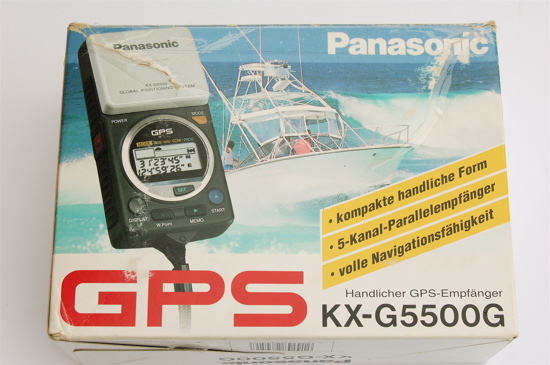
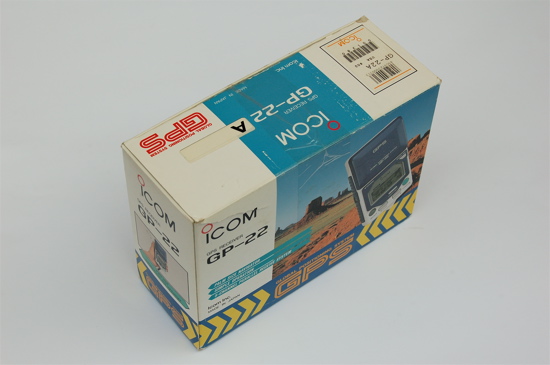
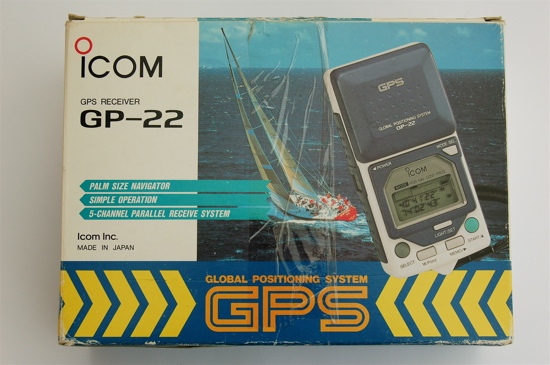
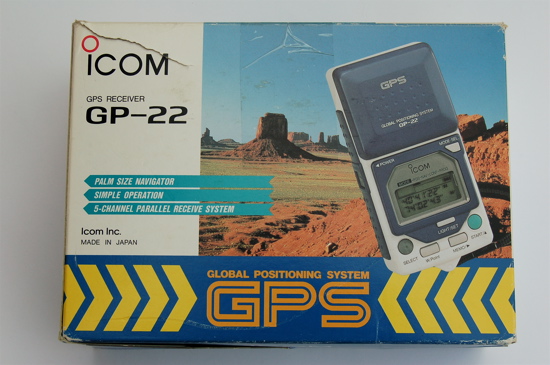
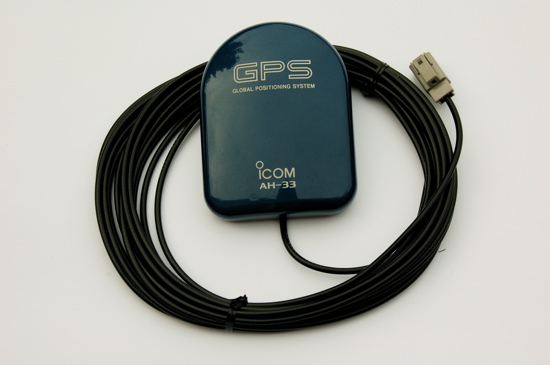
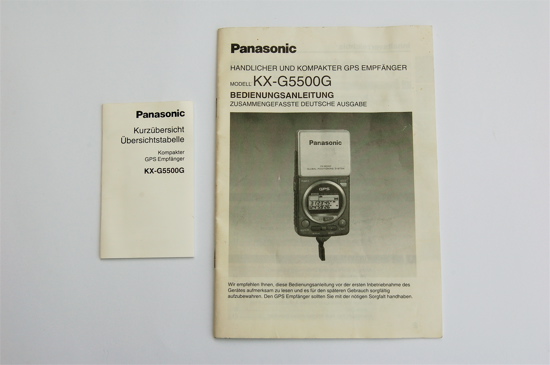
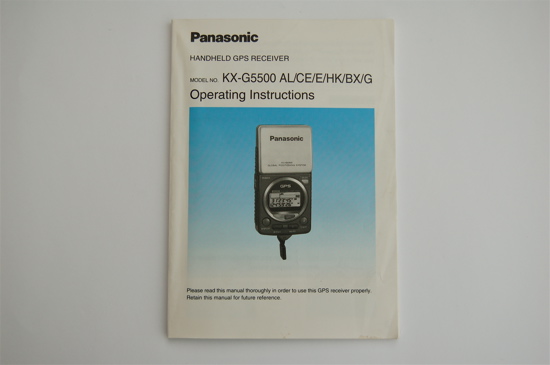
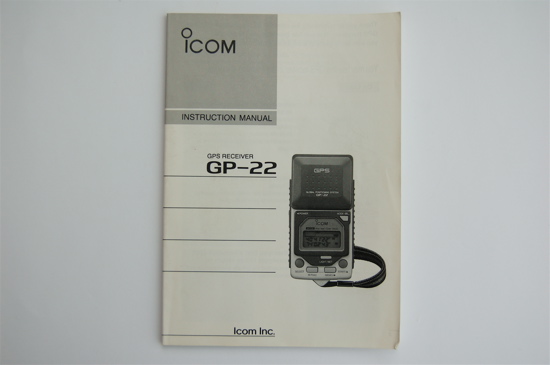
Initialization:
The KX-G5500 initializes fully automatic, there is no user input necessary.
Features:
99 waypoints
9 routes
Distance / bearing between two waypoints
93 map datums
With 5 AA cells:
Dimensions: 135mm x 67mm x 53mm
Weight: 400g
With NimH battery pack:
Dimensions: 135mm x 67mm x 35mm
Weight: 330g
The KX-G5500 initializes fully automatic, there is no user input necessary.
Features:
99 waypoints
9 routes
Distance / bearing between two waypoints
93 map datums
With 5 AA cells:
Dimensions: 135mm x 67mm x 53mm
Weight: 400g
With NimH battery pack:
Dimensions: 135mm x 67mm x 35mm
Weight: 330g